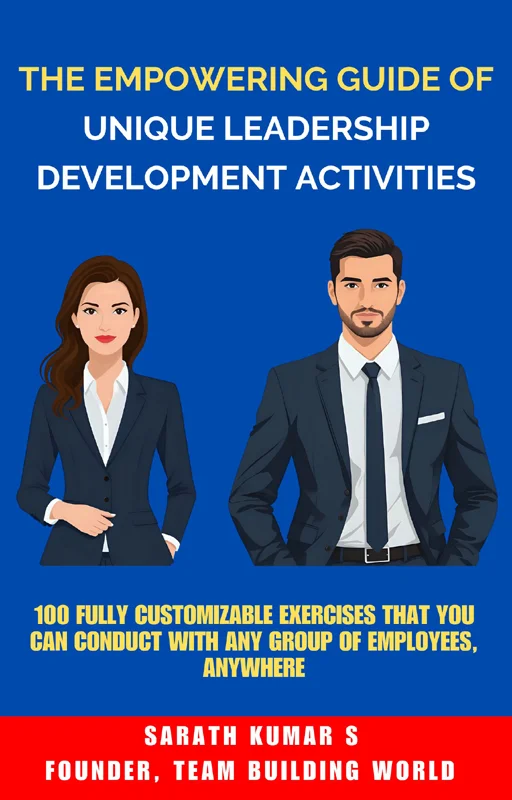How to Create a Strong Executive Development Plan (EDP)?
Do you want to know how to create a strong executive development plan?
Developing strong leaders is critical for the success and longevity of any organization. An effective plan provides a framework to help leaders grow, adapt to new challenges, and meet organizational goals.
In this article, we outline a step-by-step guide to creating a robust executive development plan (EDP) that delivers measurable results.
What is an Executive Development Plan (EDP) and Why is it Important?
An EDP is a strategic document that outlines the developmental goals and actions of an organization’s top executives. It serves as a roadmap for their continuous improvement and growth as leaders.
A well-crafted EDP helps identify the skills, knowledge, and behaviors needed to drive business success. It also aligns individual goals with organizational objectives, creating a sense of purpose and direction for both the executive and the company.
How to Create a Strong Executive Development Plan (EDP)?
Here are some ways to create a strong EDP.
#1. Assess Organizational Needs
Start by identifying what your organization needs from its leaders. For instance,
– What skills, behaviors, and expertise are necessary for success now and in the future?
– What are the organization’s short-term and long-term goals?
Align the development plan with the organization’s strategic goals, prioritizing key areas like decision-making, communication, and change management. A thoughtful assessment ensures that the plan directly addresses leadership gaps and supports broader business objectives.
You can also read: 11 Leadership Development Activities for Employees
#2. Conduct a Leadership Gap Analysis
Evaluate the strengths and weaknesses of your current executives. Various tools and techniques can provide valuable insights into areas that need improvement. Some of them are:
– 360-degree feedback surveys
– Leadership competency assessments
– Performance evaluations
– Interviews with stakeholders
Compare this analysis against the skills and capabilities defined during your organizational needs assessment to identify the key growth opportunities.
#3. Define Clear Goals and Objectives
Each plan should include specific, measurable objectives tailored to the individual leader. Goals might involve enhancing strategic thinking, improving emotional intelligence, or mastering industry-specific knowledge. For instance,
– What specific leadership competencies or skills need development?
– What knowledge or expertise is required to drive success?
Defining clear expectations helps executives stay focused and ensures the plan delivers tangible outcomes.
#4. Design Personalized Development Strategies
No two executives are the same, so a one-size-fits-all approach won’t work. Create tailored plans that include a mix of learning approaches. For instance,
– Hands-on activities
– Mentorship
– Formal training programs
– On-the-job experiences
– Industry conferences
Integrate both short-term and long-term strategies to encourage continuous growth over time.
#5. Implement Ongoing Coaching and Feedback
Coaching is a vital element of executive development. Providing regular, constructive feedback helps leaders refine their skills and adjust their approach as needed.
Partnering with an experienced coach or mentor can also offer invaluable guidance and perspective on navigating complex challenges.
#6. Foster a Culture of Learning
Encourage leaders to adopt a mindset of continuous learning by promoting knowledge sharing, curiosity, and adaptability. Create opportunities for professional development through workshops, training programs, and collaborative learning initiatives.
A strong culture of learning enhances innovation and equips executives to tackle evolving challenges effectively.
#7. Set Clear Timelines and Milestones
Great plans should have a defined timeline with specific milestones to track progress. Regular check-ins provide opportunities to evaluate the effectiveness of the plan, make adjustments as needed, and celebrate successes along the way.
A structured timeline and regular milestones keep executives motivated and accountable for their growth.
#8. Incorporate Succession Planning
A robust EDP also considers the long-term future of leadership within the organization. Use succession planning to identify potential candidates for key roles, provide them with targeted development opportunities, and groom them for future leadership positions.
This proactive approach ensures a stable pipeline of qualified leaders to support the organization’s growth and sustain success.
#9. Leverage Technology and Tools
Integrate technology and tools into the development plan to enhance learning, track progress, and measure results. Online platforms, virtual coaching sessions, and e-learning courses allow executives to access resources and opportunities for growth at their convenience.
Technology can also provide valuable data on the effectiveness of the plan, helping organizations refine their approach over time.
#10. Monitor and Evaluate Results
To ensure the plan is delivering its intended outcomes, regularly monitor and evaluate results. You can use various methods to measure the impact of the plan on both individual leaders and the organization as a whole.
For instance,
– Establish KPIs to measure success
– Schedule regular check-ins or progress updates
– Provide ongoing feedback
– Celebrate successes and address areas for improvement
Based on this data, make necessary adjustments to continuously improve the effectiveness of the plan.
How can You Successfully Implement an EDP?
To successfully implement an EDP, it’s crucial to have buy-in and support from all levels of the organization. Communicate the importance of developing top leaders and their critical role in driving business success. Involve executives in the creation and ongoing evaluation of the plan to ensure ownership and commitment.
Finally, regularly review and update the plan to adapt to changing business needs and individual growth.
Want Some Unique Leadership Development Activities?
If you want some unique activities to equip your employees with leadership skills, qualities, and mindset, you can get my new e-book:
Or Want Some Unique Team Building Activities?
If you want some unique activities for your employees (both in-person and virtual), you can get my new e-book:
Final Words
A strong senior leadership development plan is more than a checklist—it’s an investment in the future of your leadership team and your organization. By aligning the plan with organizational goals, tailoring strategies to individual needs, and fostering a culture of growth, you can ensure that your executives have the tools and confidence to thrive in their roles. Start planning today to empower your leaders for tomorrow’s challenges.
FAQ: Creating an Executive Development Plan (EDP)
You might have these questions in mind.
What are the benefits of an EDP?
An EDP helps align individual goals with organizational objectives and identifies leadership gaps. It also supports the growth of both leaders and the company. More importantly, it promotes a culture of continuous learning and ensures a stable pipeline of qualified leaders for the future.
Who should be involved in creating an EDP?
Ideally, a cross-functional team including HR professionals, senior leaders, and the individual executives themselves should collaborate to create an effective EDP. This ensures that all perspectives are considered and that the plan meets both organizational needs and individual goals.
How often should an EDP be reviewed?
An EDP should be regularly reviewed and adjusted as needed. It’s recommended to have at least quarterly check-ins to track progress against goals and make any necessary adjustments. The entire plan can also be evaluated annually to ensure it remains aligned with organizational objectives.
Can technology really enhance the effectiveness of an EDP?
Yes, technology can significantly enhance the effectiveness of an EDP. Tools such as learning management systems, virtual coaching platforms, and performance tracking software provide personalized learning experiences and real-time feedback. These technologies enable executives to access resources anytime, monitor their progress, and stay accountable to their goals. By integrating technology, organizations can ensure the development plan remains dynamic, efficient, and impactful.
What are some examples of strategies that can be included in an EDP?
Some examples of strategies that can be included in a senior leadership development plan include mentorship programs, formal training courses, on-the-job experiences, industry conferences, and coaching or mentoring sessions. It is important to tailor these strategies to the individual needs and goals of each leader. Additionally, incorporating technology and tools such as online platforms and e-learning courses can also enhance the effectiveness of the plan.

